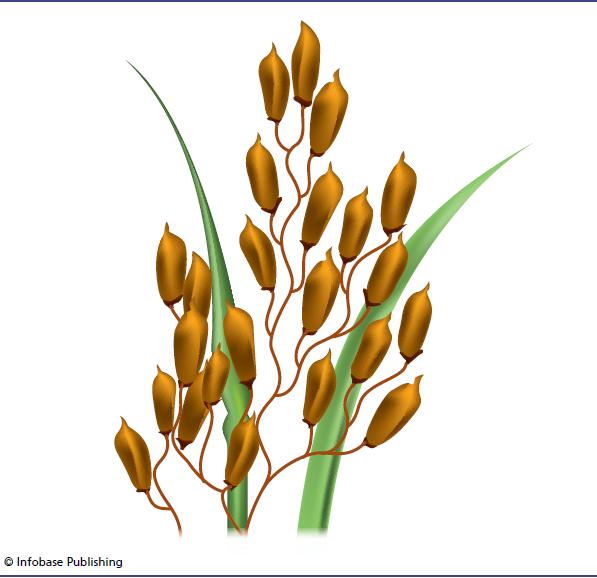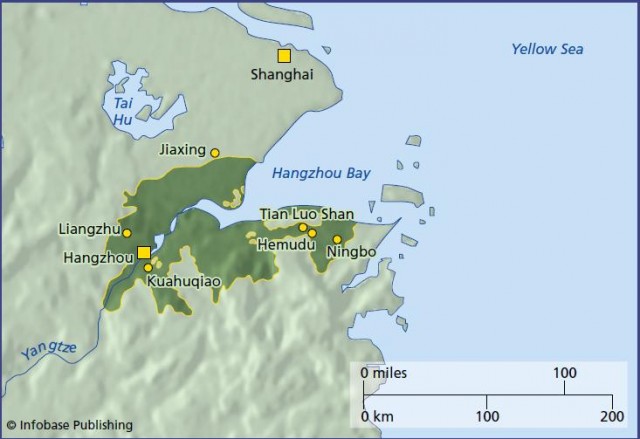The Story of Rice
Rice (Oryza sativa) is also a member of the grass family (Poaceae). Today it is the staple food for about half the world's population, with two major varieties, O. sativa indica and O. sativa japonica. Its many tiny flowers, known collectively as an inflorescence, have a complex structure with many branches. This is called a panicle, and as the flowers develop into seed grains these also form panicles. The following illustration shows a rice panicle.
Rice was first cultivated in the valley of the Yangtze River in China. As with wheat, rice domestication involved the mutation that substituted a tough rachis for a brittle one and, also as with wheat, archaeobotanists can tell by the rachis scar left on the grain whether it came from a wild or domesticated plant. As well as the evidence from the grains themselves, rice cultivation attracts a distinctive suite of weeds. Although rice can be grown as a field crop on dry land, it is most productive when the young seedlings are planted into shallow ponds called paddies to complete their growth. The paddies are then drained when it is time for the crop to ripen. Plants such as sedges and rushes commonly occur as weeds in rice paddies, and the presence of these plants at archaeological sites alongside rice grains is clear evidence of paddy cultivation.

There is archaeobotanical evidence of rice cultivation between 8,000 and 7,700 years ago at Kuahuqiao in Zhejiang Province, about 20 miles (32 km) upstream from the head of the Yangtze estuary. Investigations at Tian Luo Shan led by Dorian Fuller of University College London have shown that the domestication process had not been completed by about 6,600 years ago. This is further evidence that crop domestication is a very slow process. The above map shows the location of these archaeological sites.
After the plant had been domesticated in China, rice cultivation spread eastward to Korea and Japan and westward into India. Farmers were growing rice in northeastern India and Myanmar (Burma) by about 4,000 years ago, and it reached southern India by about 1,400 years ago.

- The Story of Wheat
- The Origins of Agriculture
- Carl Skottsberg and the Plants of Southern South America
- August Grisebach and Floral Provinces
- Edward Forbes and the Significance of Ice Ages
- Alphonse de Candolle and Why Plants Grow Where They Do
- Franz Meyen and Vegetation Regions
- Karl Ludwig von Willdenow and the Start of Scientific Plant Geography
- Alexander von Humboldt and the Plants of South America